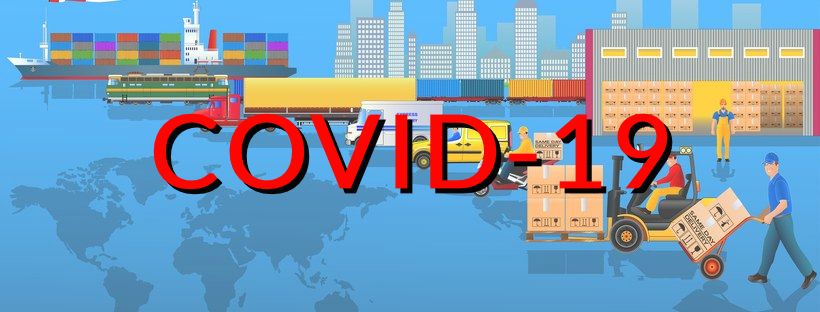5 Ways the COVID-19 Pandemic has Changed the Supply Chain
 Author: Brett Knox
Author: Brett Knox
October 7, 2022 - 3 MIN. READ
With critical supply and labor shortages, COVID-19 drastically altered supply chains and forced many businesses to change the way they purchase and procure supplies, parts, and resources. And despite the initial lockdowns taking place more than two years ago, supply has yet to fully recover and is becoming increasingly unpredictable.
For business leaders who want to stay competitive and maintain growth, it is crucial to understand the underlying causes of the pandemic’s supply chain breakdown. Armed with a greater understanding of why issues are occurring, businesses can adopt preventative measures to avoid costly delays and adapt their businesses to the post-pandemic world.
Labor
Among top points of consideration when discussing the current state of the supply chain is the resulting labor shortage. Because of mass uncertainty during the early stages of the pandemic and the severity of its impacts, many skilled workers were laid off or even encouraged to retire early, resulting in an event colloquially known as the “Great Resignation”. Companies, both large and small, were forced to layoff skilled employees to accommodate restrictions placed on businesses by the CDC in order to safely operate and avoid losses. Many of these workers transitioned into new roles in different industries or simply opted into self-employment. The newly self-employed moved on to start businesses or continue their previous jobs in a freelance capacity. Because of all this change, when emerging from the pandemic many organizations struggled to fill vacant positions once occupied by skilled laborers. As a result this shortage of workers resulted in a drastic decreases in productivity, particularly in manufacturing, while demand began to recover.
Material shortages
Material production has also suffered heavy lapses when attempting to meet demand in recent years. Manufacturers make money by fulfilling contracts for their clients. These contracts help manufacturers determine and predict future demand for their products, but because of frequent shortages of raw materials and the workers needed to produce them, many manufacturers struggle to meet this anticipated demand, resulting in a compounding issue, with demand steadily increasing while supply dwindles. In fact, many producers and manufacturers are still struggling to catch-up on back orders dating all the way back to the early days of the pandemic.
Demand
With these pitfalls negatively affecting the supply of material goods, raw materials, and resources and, consequentially the businesses dependent upon them, demand has only increased as organizations become desperate to compensate for the lack of steady operations and growth. Because there is no clear solution to the labor and material shortages, demand continues to skyrocket in nearly every industry without an obvious fix.
Lack of answers
Lacking a clear comparison to previous disasters that affected the modern world so severely, the pandemic has created a supply-oriented problem where it is difficult to identify a proper solution. Analysts continue to relay data that tells us the consequences of the pandemic as they occur, but predicting trends has been difficult, making useful, relevant data extremely valuable yet difficult to generate.
Data analysis
However, the COVID-19 virus has supercharged the use of data management in parts and materials procurement. Two years into the pandemic, data is helping many teams forecast future delays so that they can stock up on necessary materials as they become available.
Here are several ways analytics help the supply chain:
- Reduce costs and increase margins – Price and availability data can help buyers make informed purchasing decisions that ensure they are buying the supplies they need at their optimal price.
- Decrease risks – Data can track current risks to the supply chain and use them to help predict future threats that may decrease or eliminate availability on certain materials all-together.
- Increase accuracy – By leveraging their own past procurement data, businesses are better equipped to determine which products and services are most profitable so that companies can their buying power to secure resources necessary to prop up their most cost-efficient streams of revenue.
- Achieve a lean supply chain – Analytics can help businesses monitor inventory and supplier availability to ensure that they are equipped for future increases in demand.
- Prepare for the future – many businesses have opted to use aggregate economic data to help predict future changes in supply and demand, allowing them to better prepare for new waves of shortages and rising demand for their goods or services.
Conclusion
The Covid 19 virus and the resulting pandemic have had a lasting effect on the global supply chain. While most of this change has been negative, growing investments in data analytics are helping businesses find innovative and low-cost ways to make up for labor and material shortages.
Raiven can help
With considerations like these in mind, the team at Raiven has created a robust online platform that aims to reduce the damage of these supply chain inefficiencies.
Raiven members receive heavily discounted prices on equipment, parts, and maintenance supplies as well as a purchasing platform that makes buying fast and efficient. Key benefits include:
- Pre-negotiated discounts of 7-25%+ from industry leading suppliers like Carrier, Ferguson, Grainger, Graybar, Koch Filter, and more.
- Supply chain alerts for price and product availability changes on the supplies that matter to you most.
- Private marketplace houses all your preferred suppliers in one location for easy access to your discounts. No more bouncing around websites comparing prices.
- AI-powered purchasing tools that find the lowest prices even when employees shop outside your preferred suppliers.
Raiven is your one stop to save time and money. Visit Raiven to learn what we can do for you.


